This article has links to products and services we love, which we may make commission from.
Planning to move from America to the glorious country of Scotland? Welcome to the club!
Over 15,000 Americans now call Scotland home, and if you’re one of the lucky ones you will be able to as well.
Life in Scotland is a little slower than what you might be used to and depending on where you come from, perhaps a bit more old-fashioned, but that adds so much of the charm.
Even living in Edinburgh or any of the bigger cities, it often feels like I’ve taken a step back in time.
Grab a nice hot cuppa and a few biscuits, because there is a lot to learn about how to move to Scotland.
Unfortunately moving to Scotland – or any new country – isn’t always as glamorous, or as easy, as Hollywood often shows it to be.
Between expensive visas, learning a new culture, meeting new people, and trying new foods it can be a little exhausting and overwhelming; and while you’ll be giving up a lot when you leave your home country, you’ll gain even more by coming to this amazing one.
So fasten your seatbelts because a move to Scotland, while worth it, is anything but easy.
Obviously, this is written from my own experience as a US citizen moving to Scotland.
Like to share your experience too? Leave us a comment at the end of this guide.
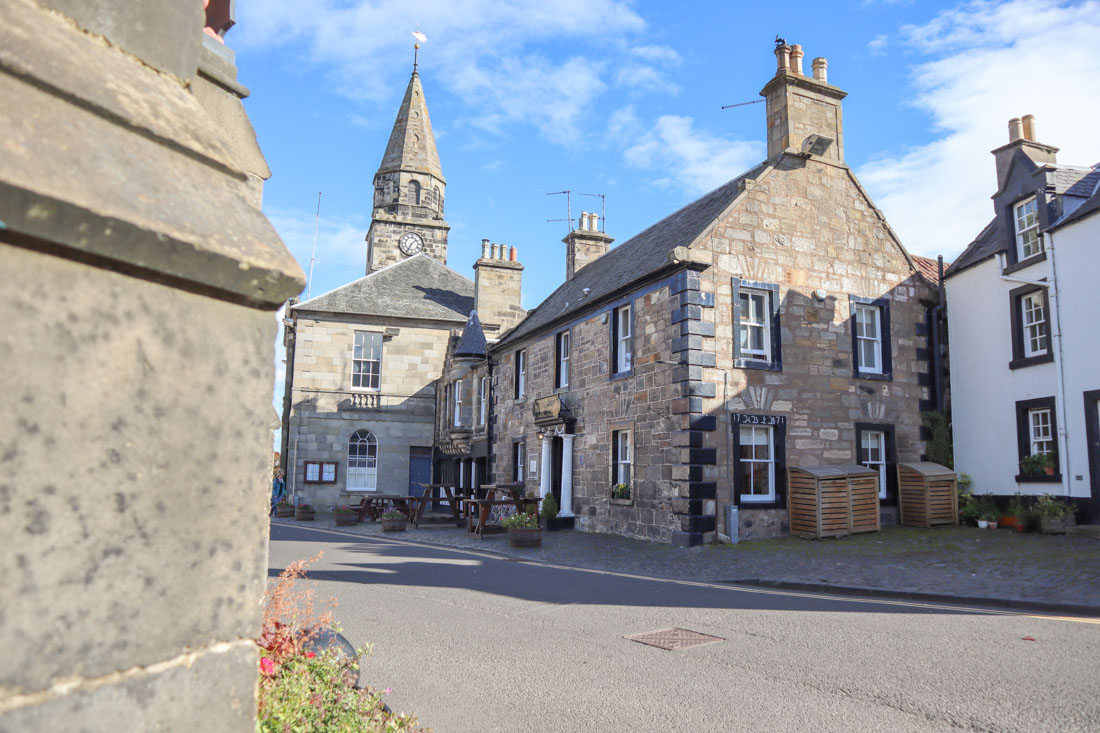
Moving to Scotland for Americans
1. How to Immigrate to Scotland
I met my Scottish husband in an airport in summer 2016 & after a few months realized that we wanted to live in the same country so we got married in March of 2017 and I moved to Edinburgh in autumn 2017.
We got married so quickly because it was the only feasible way to live in the same country for us, neither of us wanted to go back to University, neither of us qualified for a work visa, and neither of us had any special circumstances.
I love living in Scotland, but moving to Scotland from the US was and still is a humongous undertaking that is very expensive, time-consuming, and ultimately very stressful.
As an American moving from the US to Scotland, you must qualify for a specific visa, this is the most important thing because without this you will reach a dead-end; despite how movies make it seem.
And even if you qualify, getting an approved visa to Scotland isn’t guaranteed.
It is impossible to detail every single visa option & what they entail, but we’ll go through the most common ones and essential information you’ll need to know.

How to Move to Scotland with a Visa
The most common visas to get to options for Americans are a student visa, a spousal visa, a work visa, or an ancestry visa, but there are other options; if you aren’t sure which visa is the best option for you, this page can help.
- A Student Visa is pretty self-explanatory; it requires you to maintain your status as a student when you are here, meaning if you drop out or graduate, this could affect your visa status.
- A Work Visa requires you to have a job in the UK that is willing to sponsor you; however, that job also must be on the shortage occupation list.
- An Ancestry Visa is only applicable if at least one grandparent was born in the UK and you are also a citizen of a Commonwealth country; this is an excellent option if you want to move to Scotland from Canada.
- A Spousal Visa isn’t automatically granted when you marry a British citizen; being married to a British citizen allows you to have the eligibility to apply for a visa.

The visas must be applied for while you are in the USA, and you must remain in the USA from the application date until you receive your response.
You will have to pay the cost of the visa fee and an IHS surcharge fee (Immigration Health Surcharge) that will cover your healthcare costs for the duration of your visa; both of these fees vary per visa.
Once you have submitted your online application and paid for it as well as your IHS surcharge fee, you will have to attend a biometrics appointment where you will be photographed and fingerprinted.
You may also have to submit documents to the UK Visa Office; this again will vary depending on your visa, including a marriage certificate, birth certificates, a job offer, student records, etc.
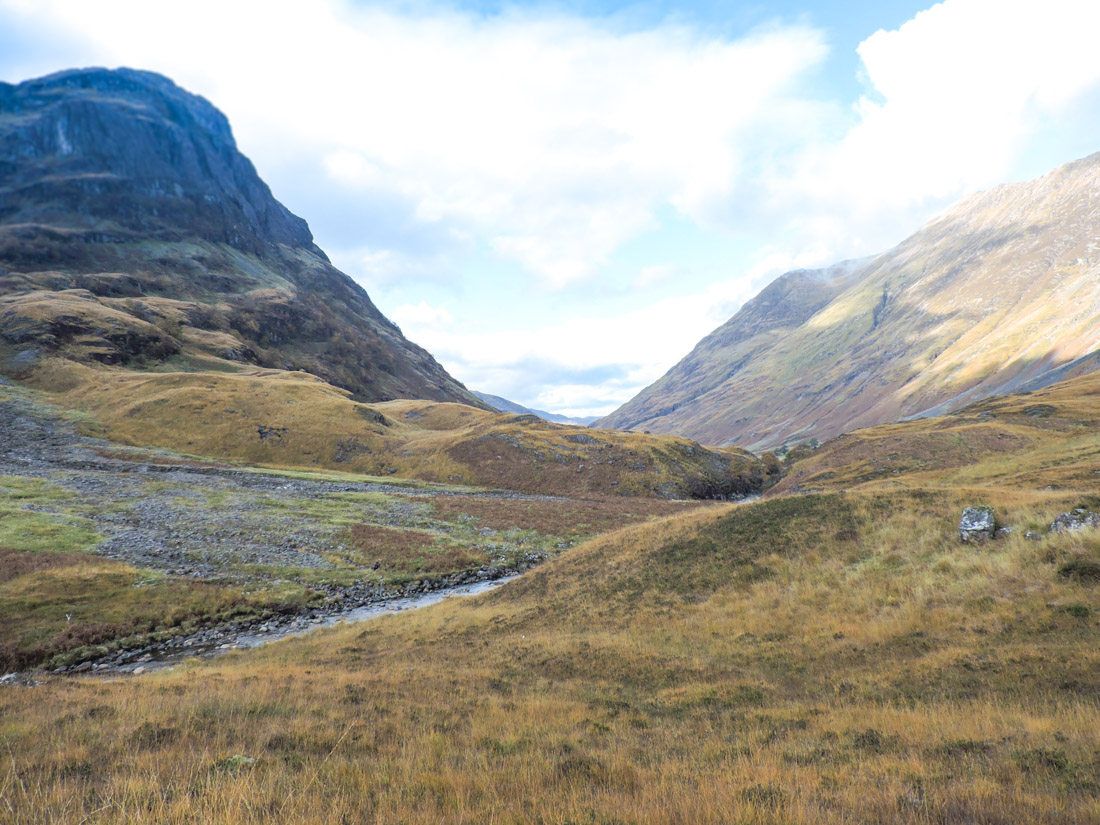
The waiting times can vary between 3 and 12 weeks, but you can pay to have your visa expedited if you are in a desperate hurry.
Once your visa is approved, you will receive a BRP (Biometric Residence Permit) that states your type of visa and how long it is valid.
If your visa is refused, you will be notified as to why it was rejected, and you will be able to reapply, but you will only receive your IHS surcharge as a refund; you will not receive the visa application fee refunded.
And after ALL of that, you will have a specific amount of time that you must enter the UK from the date that your visa is approved, and if you do not enter during that time frame, your visa will be canceled.
So you have to be ready to move everything in a very short time or be prepared to stay should your visa application not be successful.
How to get Scottish citizenship will depend on your visa pathway, but once you have the opportunity to get it, I would highly recommend; there are no negatives to having Scottish citizenship and you will have two passports, never have to apply for a UK visa again & finally get to say that you are Scottish!
Finally, apply for a National Insurance number as soon as your visa is granted (but check your BRP, there may be one printed on it), it can take up to 16 weeks to get one, and many jobs will want you to have one to start working there.

2. House Hunting in Scotland
You’ve been granted a visa – woohoo! I wish I could say that the hard part was over, but there’s so much more to go.
First, you need to figure out where to live; most people will move over because of their studies, job, or partner, so for the most part, that will be decided for you, and you may even have accommodation already sorted for you.
If that isn’t the case, consider doing an extended stay at an Airbnb to learn more about the area before you sign a lease; here are some great options for AirBnb’s in Edinburgh.
If you want more permanent accommodation, Zoopla is a popular website to use, but remember that homes in Scotland are different from what you’re used to, so you’ll have to be open-minded.
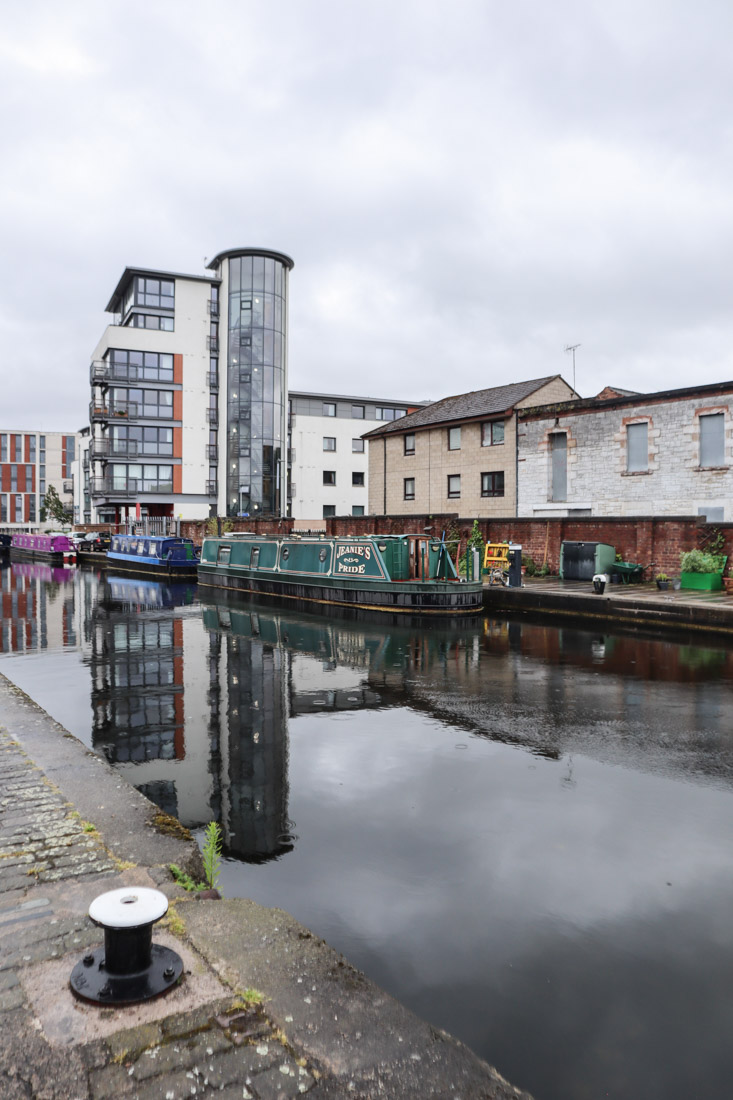
Put simply, this is a small country, and therefore the homes are also small, this is especially true the closer you live to a city.
- Most homes do not come with A/C units, and your neighbors will probably raise their eyebrows if you get one; Scotland is only warm enough for a few weeks out of the year to justify having one.
- On a rare warm day, you’ll be tempted to open the windows for a cool breeze, but you won’t find any screens on them, so your home may have some buggy visitors come in with the wind.
- There are no plug sockets in the bathrooms because the voltage is higher here at 220 and 240 volts, which would give a higher risk of an electrical shock should your appliance come into contact with water; however, every other room should have at least one socket.
- If you chose to bring over any American appliance, you must ensure that you have a proper converter to be able to use them; overall it would be better to purchase UK appliances.
- Sinks have a separate hot and cold tap, and after four years of living here, I still haven’t accurately mastered how to get an evenly warm temperature.
- You will struggle to find an open plan layout; instead, you’ll often find that every room has a door to it; this might seem superfluous but is helpful in the winter to contain the heat in the individual rooms.
- Washing machines are often kept in the kitchen and you will rarely find a tumble dryer, most Scots hang their laundry outside or in the house.
- Homes may have attic space and driveways, but you’ll rarely find basements or garages.
- What is referred to as a front/back yard in America is called a garden in Scotland.
Like most places in the world, the further out to the “middle of nowhere” you are, the more affordable the home will be, the closer you are the amenities, the higher the rent/mortgage.
Where you live defines your catchment area, which limits where your children can attend school, and to which doctor’s office you will be registered, so consider this if you have or are planning to have children that are school-age.
You may be tempted to take everything with you, but consider the shipping costs and if it is worth it bringing your items across or more cost effective and less stressful to buy them new once you’re here.
Also consider the size of your current home vs your new one, you may find that if you bring all of your furniture, clothing, books, etc. you won’t have adequate space for everything.
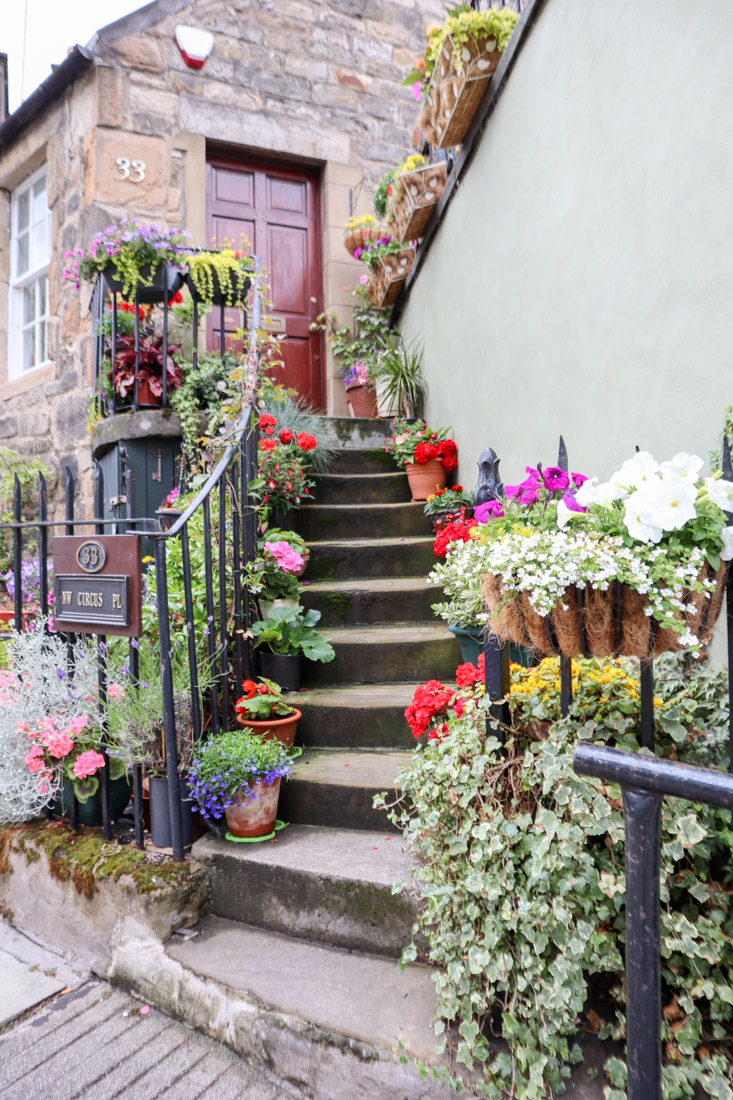
3. Navigating the NHS Healthcare System
NHS Scotland is a fantastic and life-saving service, but often very confusing to understand – even for the locals.
When you move into your new home, you can register at your local doctor’s office – referred to as a “Doctor’s Surgery or GP Office (General Practitioner)– to begin receiving healthcare.
You can register for a dentist through the NHS or choose to pay an nominal out-of-pocket fee with private care.
The NHS is not “free” healthcare; you pay for it through an automatic deduction in your payslip and the amount that you pay depends on your salary; for example, I pay 7% of my wage.
Navigating the NHS can be tricky; there are often long waits for non-emergency situations, and there are certain treatments and procedures that the NHS does not cover for which you would have to pay privately.
For the most part though, you will be able to use its services and not have to pay out of pocket for them, prescriptions, or bi-annual eye tests and dental checkups.
An NHS doctor’s appointment will feel different from what you’re used to; they are only 10 minutes long and will only cover one topic, so if you have a stomach and heart issue, you will need to make two appointments to discuss each one.
Should you find that a wait time is too long or the NHS doesn’t cover a service you need, you can pay for private insurance (many companies offer this as an option to their employees as well), to get a quicker or more comprehensive service.
Private health insurance is still very affordable in comparison to American private health insurance.

4. Driving in Scotland
As an American living in Scotland, you and drive on your American driver’s license for one year before you have to get a UK one; there are many rules of the road that you may not be used to, so it would be a good idea to look over the UK’s Government’s website, where you can learn everything you need to know.
If you want to get a driver’s license, be prepared for an arduous journey; even if you drove for decades in America, you may struggle to obtain a UK license here.
You should begin the application process for your UK license as soon as you arrive, as it could take a year or longer to obtain it; you should also budget a few hundred pounds for everything.
First, you have to apply for a provisional license.
Second, you need to take a theory test; there is often a months-long wait, so plan accordingly.
Then you need to take a driving test which you can only do once you’ve passed a theory test; this also has a months-long wait.
I would highly recommend taking driving lessons in between, the test is much more stringent here, and you can be failed for even a tiny infraction, especially if you previously only drove automatic and you want to get a manual license.
Unfortunately, getting a driving instructor can often also have a long waiting list and can become quite expensive.
If you get a manual license, you can drive either car type; if you get an automatic license, you can only drive automatic cars.
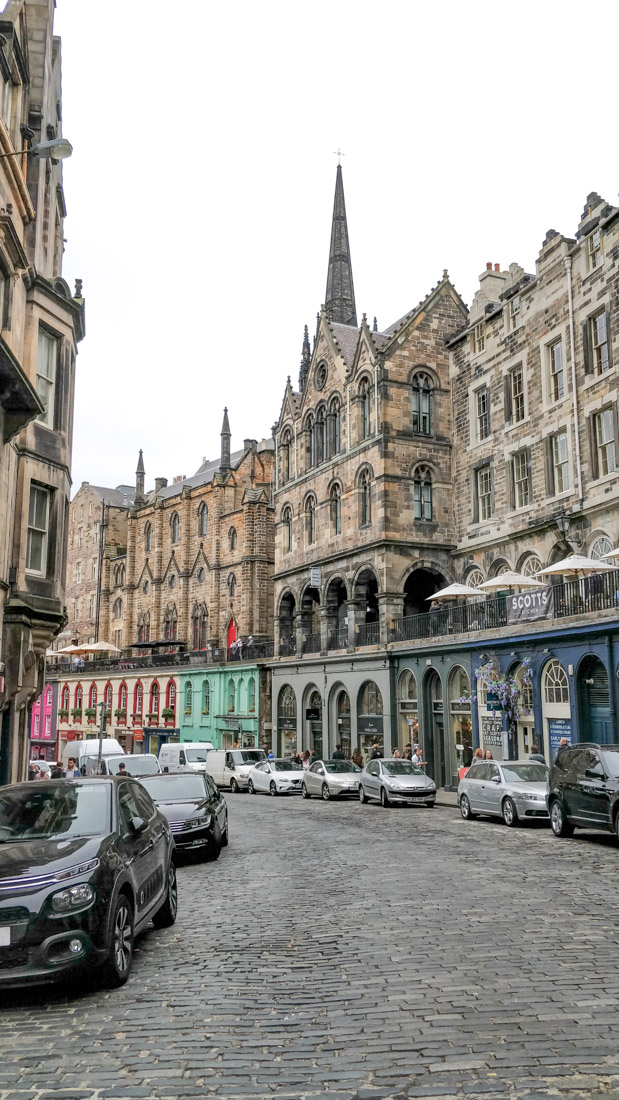
Essential Driving Tips to Know
- Scotland has a very strict drink-drive limit; although you can technically have minimal amounts of alcohol in your system, most Scots view it as effectively a zero-tolerance limit; your best bet is to abstain entirely.
- Most American drivers are accustomed to a four or five-point stop sign or red light to control traffic flow; here, you’re more likely to find a roundabout to do the same thing.
- Scotland is known for being particularly bad with roadworks, especially in city areas, often creating traffic jams — and beware of potholes — many streets are rife with them.
- If you’re driving in the countryside, there’s a whole other slew of things to consider; many country roads are narrow, one-way roads with designated passing spots for you to pull over if another car is coming your way.
- Country roads are also rarely lit with streetlights and can get very dark; coupled with the frequency of sheep, cows, and other wildlife on the roads means that you have to be highly aware of your surroundings.
If driving sounds like too much hassle, Scotland has an excellent train system and network of buses; in fact, many people choose never to learn how to drive because it is so easy to get around without a car.
If you like traveling by bus, you can take so many adventures around Scotland, like this one.
If you live in a city, you truly can survive easily without a car; if you are living in the country, a vehicle will significantly increase your mobility options.
You may also enjoy reading our 7 days in Scotland itinerary.

5. Transportation
If getting a driving license isn’t for you or isn’t something you want to do right away, you can take advantage of the affordable and widely available public transportation systems in the country.
Scotrail is Scotland’s national train service that has over 300 stations in Scotland, giving you a wide berth of travel choices; here are 8 fun day trips from Edinburgh you can take by train.
You can purchase tickets at the station or in advance online or with Scotrail’s travel app.
The cost of your ticket varies on the travel distance and the time; during peak hours (coinciding with rush hours), tickets will be higher; the more off-peak, the more affordable.
Aside from trains, you can also take buses all around Scotland; the four main bus companies are First, Stagecoach, Lothian Buses, and National Express, but there are dozens of other smaller companies throughout the country as well.
In cities, buses will have a wider timetable, in smaller villages expect to have less available service on weekends and evening.
You can also use cab-hailing apps like Uber or Gett, or you can book a taxi through a local service.
If all else fails, you can live like a local and walk! Americans are used to getting in their car and driving anywhere, even a store around the corner, here; you’ll find people will often only take their car or use a bus if they’re going somewhere farther than they are comfortable walking.
You can take a walking tour like this one to explore and learn about some hidden gems.

6. Taxes and Banks
There’s so much to worry about when you make such a big move that sometimes even the important things can slip through the cracks.
While it can be tempting to put off doing some of the big things like these, the sooner you get them organised the easier it will be for you in the long run.
Paying U.K. and American taxes
While living and working here, you will pay taxes to the UK through the HMRC, depending on your annual wage, you will between 0 and 46% tax.
Unless you are self-employed, there is very little that you will have to do regarding your taxes; Unlike America, you do not have to file them yourself, and you are instead sent updates from the HMRC regarding your tax status, such as if you owe or are owed taxes.
You might notice VAT (Value Added Tax) on your receipts, this is a sales tax that is applied to most goods and services that is included in the overall price that you see on price tags, the standard rate of VAT is 20% but some items may have less.
Every America citizen must file their taxes annual with the IRS, and depending on the amount of money you earn, youYou may also be subjected to paying tax in America; the only way out of this is by renouncing your citizenship,.
Every year you must report your earnings to the IRS; however, you will not owe taxes back to America unless you earn over roughly $100,000/£80,000, you can do this yourself via the IRS website, but there are also numerous ex-pat tax services that will do it for you for a fee.
Failing to file your taxes could have harsh repercussions if you wanted to return to live in America.

How to Open a Bank Account in Scotland
There are many banks to choose from: Royal Bank of Scotland, Bank of Scotland, Clydesdale Bank, and TSB Bank are the four most popular in Scotland.
Once you choose the bank that suits you best, you will need to open an account and to do so you will be asked to provide proof of identity and address.
You may be asked for things like your passport, rent or mortgage agreement, a letter from your employer in Scotland confirming your address and a payslip from your Scottish employer.
I talk about currency in this guide to Amerincans visiting Scotland.

7. Cost of Living in Scotland
One of the things that immediately blew me away what how much it cost to live in Scotland – compared to my life in NYC it felt like everything was nearly free!
Most Americans will find that the cost of living in Scotland is much more moderate than they’re used to back in The States; as of 2020, the median earning in Scotland was £25,616, which is roughly $35,620.
£25k may not seem like much to be considered median, but that is a liveable wage.


This is a great tool to calculate the cost of living from your current closest city to the one where you hope to move.
I found that healthcare, public transportation, and the cost of food to be a huge, noticeable difference; I can walk into a grocery store with £10 and come out with multiple meals.

Rent and mortgage prices vary significantly due to the location and size of the home, but the average rent in Scotland in 2021 was £738 per month, and the average mortgage in Scotland as of 2018 was £510 per month.
Aside from your rent/mortgage, you’ll also have to pay Council Tax, which is essentially like Property Tax it includes things like your water, trash collection, etc.
The amount that you pay annually is based on the value of your home; you can find your Council Tax band here.
When you move into your new home you must contact your local Council Authority to register your new address.
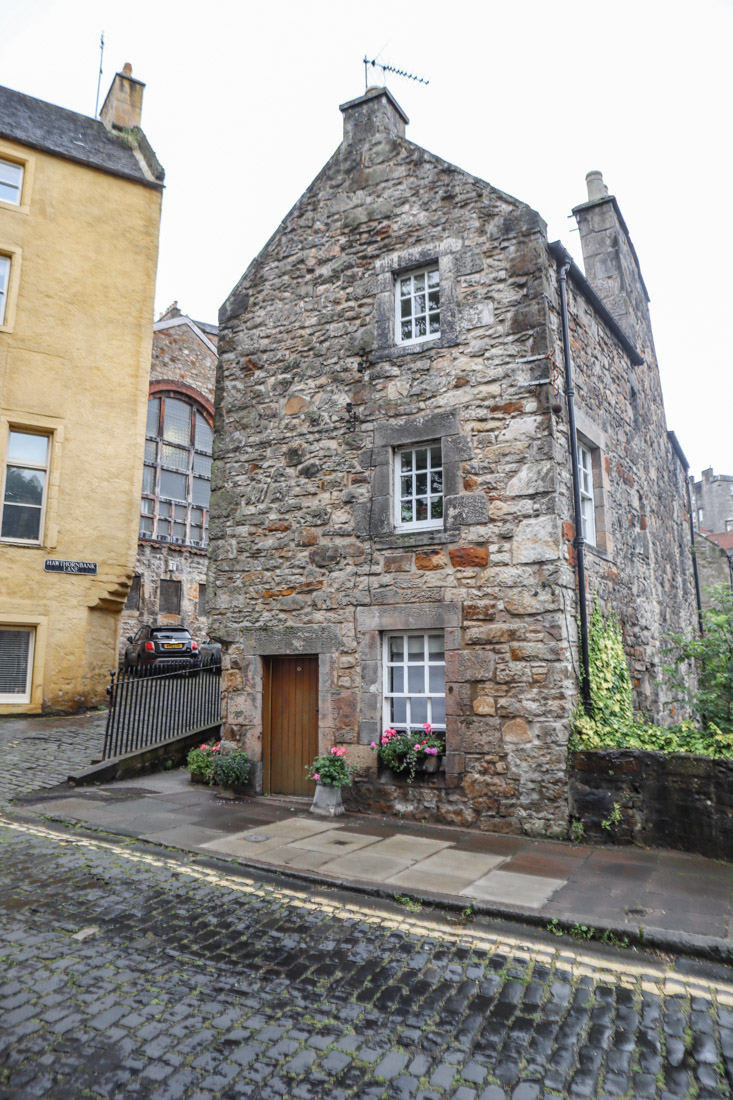
A TV License is comparable to cable television; you need a TV License to watch TV; they aren’t expensive, but you will be fined if you do not have one.
If you have children, you may want to consider childcare costs; much of this is subsidized by the Scottish Government and varies by your income level and the child’s age; this is a good tool to help figure out what your costs could be.
Cell phone plans are also notably less expensive than in the USA; the average UK cell phone bill is £46.50 as of 2021, while the average USA cell phone bill was $127.37 in 2020.
This guide provides a snapshot up to date prices in Edinburgh.

7. How to Find a Job in Scotland
If you aren’t coming over on a work visa, finding a job can feel overwhelming and daunting, some fields of study aren’t recognized here, and you may have to get re-certified.
Having a job in Scotland is very different than in America; most jobs do not require 40 hours to be considered full time, more commonly you’ll find 35 or 37.5 hours a week to be the norm.
You are also entitled to 5-6 weeks of paid leave each year, known as your holiday entitlement, no matter your position or how many hours you work.
In America, many people live to work, but in Scotland, people tend to work to live; you will rarely find people who work 60 hour work weeks and ignore their time off and prioritise their job above all others.
The culture supports a stronger work-life balance; which gives you more time to enjoy living in the wonderful country.
It can be stressful not knowing how to find work in Scotland but there are a few things that you can do to get yourself in a better place.
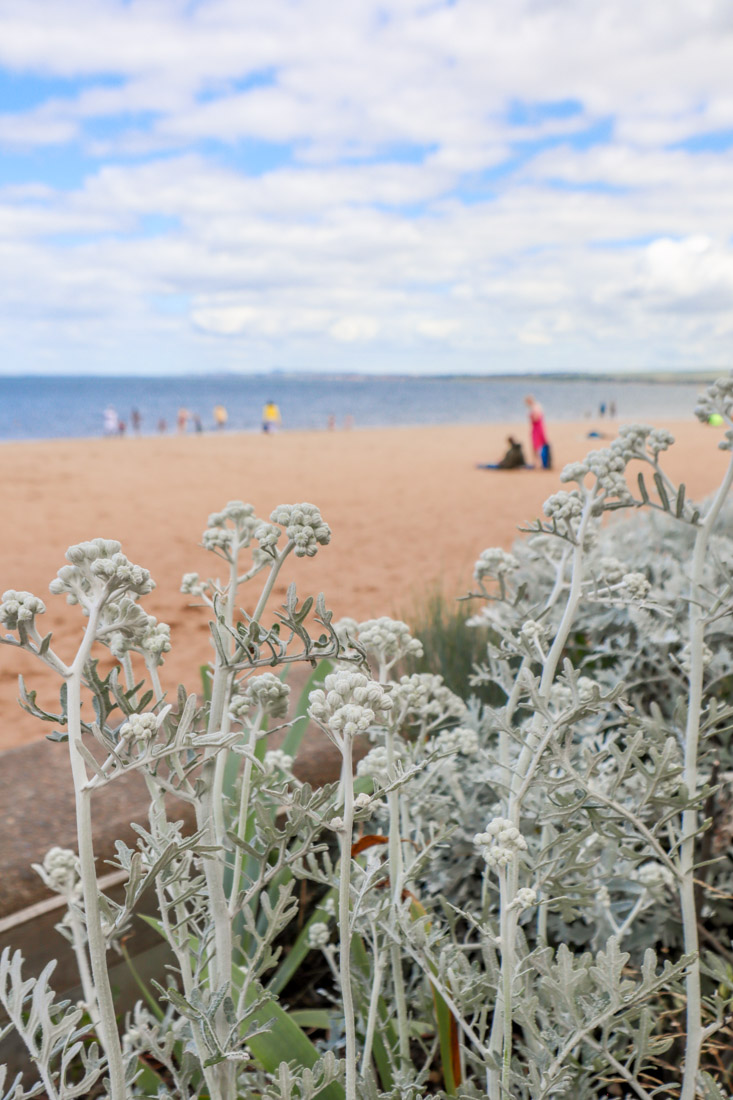
Finding a job
First, cut yourself a break; you’re in a new country and learning lots of new things a new job will fall into line.
- “It’s who you know, not what you know” is a universal saying, the more that you meet people through your partner, child, church, local dog park, neighborhood gatherings, etc. the more connections you’ll create which can lead to opportunities.
- Volunteer! There are so many volunteering opportunities in Scotland, both from home or in person; this will be a great way to connect with your local community, gain some current experience, and keep you busy while job hunting.
- Update your resume (or CV as it is called here) to a more Scottish format which includes UK English spelling, £ instead of $, converting grades to reflect the Scottish education system, and making it clear which visa you are on. There are companies that you can pay to do this or research and tweak on your own.
- Don’t be afraid to start small. Maybe you were a manager in your last company in America and you want to continue on the same level; you may have to be willing to take a few steps down just to start somewhere and then use that American work ethic to climb up the ladder.
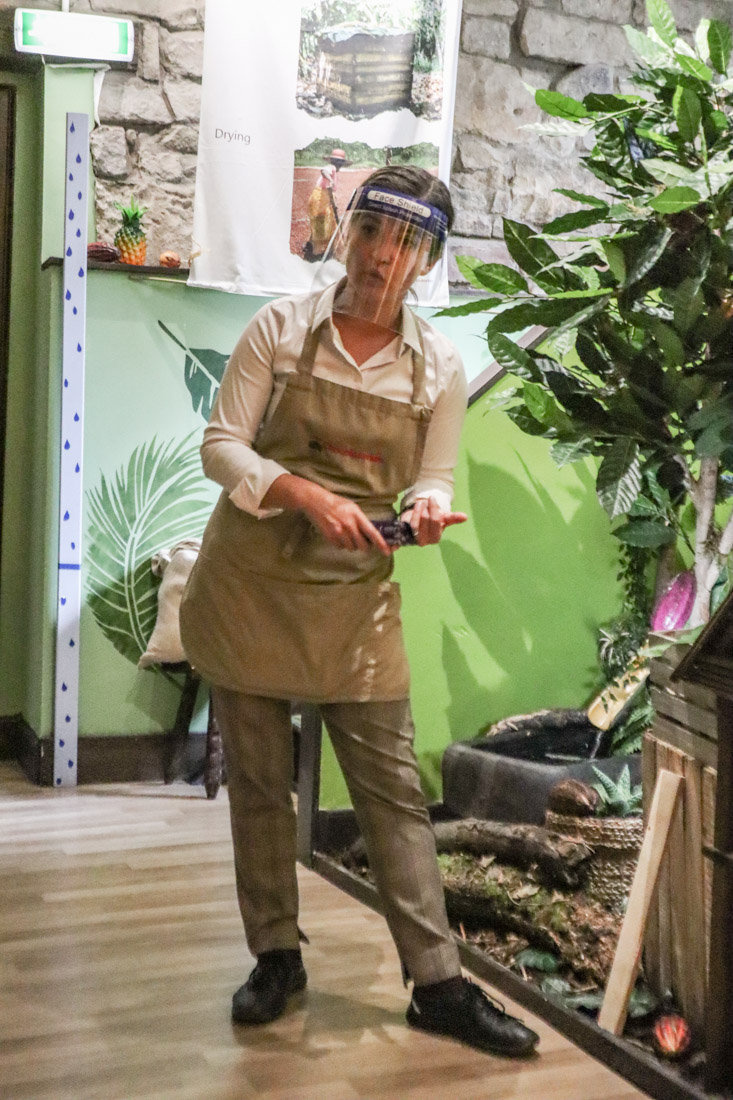
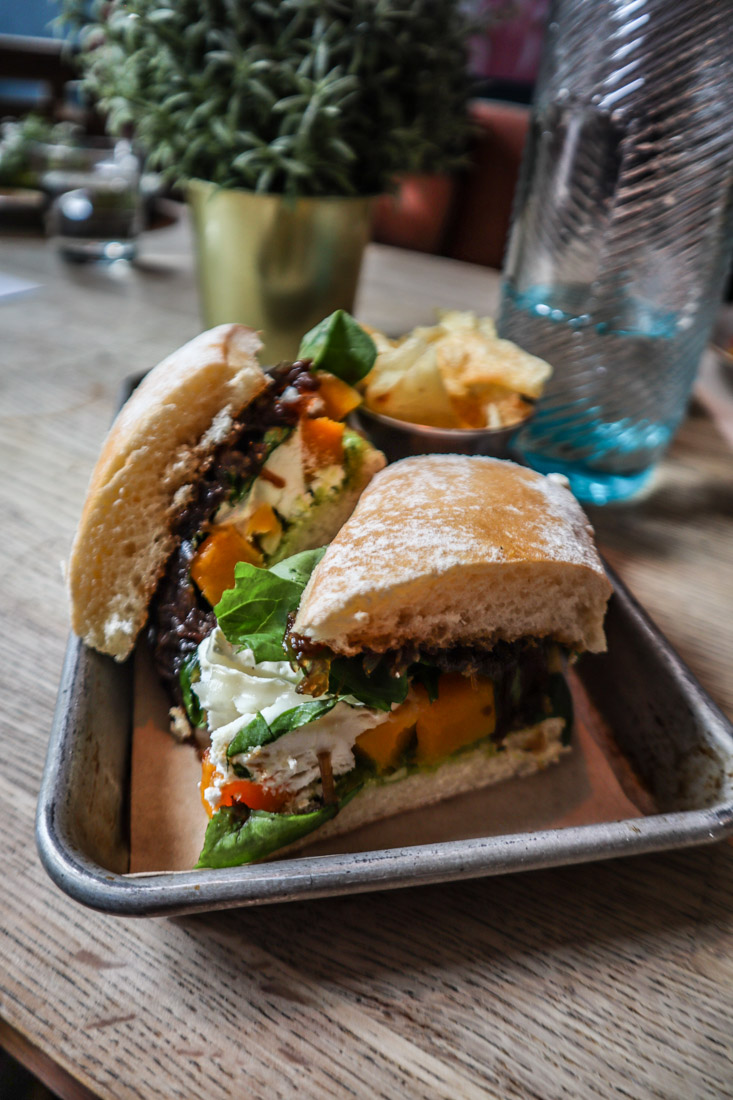
8. Food in Scotland
Scottish food is rich and hearty and often either only boiled or fried; just how the locals like it.
At any Scottish restaurant, you’ll be more likely to find dishes full of meat, potatoes and boiled root vegetables and not many colourful salads, sandwiches, or in my opinion, good tacos.
However, there are many delicious options that you’ll have to try at least once – you might be surprised!
If you told me I would LOVE a black pudding roll ten years ago, I would have laughed out loud, but… I do love a black pudding roll.
Scottish Foods You Have to Try
- Scotch Pie – a savory pie filled with meat (usually beef or mutton).
- Scotch Egg – a boiled egg wrapped in sausage meat, coated in breadcrumbs, and deep-fried.
- Bridie – a pastry filled with pieces of beef and onion.
- Scottish Breakfast – Fried eggs, baked beans, grilled tomatoes and mushrooms, toast, sausage, black pudding, haggis, bacon, and a tattle scone.
- Black Pudding – A sausage made from pork or beef blood and suet and oats.
- Tattie Scone – Made from mashed potato and flour and fried in oil.
- Haggis – A savory dish made from the organs of a sheep and minced with onion, suet, spices, and stock. Image one below.
- Tablet – Made with condensed milk, butter, and sugar, this is a grittier and more brittle version of fudge.
- Cranachan – A dessert made from oats, cream, whisky, and raspberries.
- Cullen Skink – A thick, creamy soup made of smoked haddock, potatoes, milk, and onions.
- Neeps & Tatties – Scots for “Turnips and Potatoes,” mashed turnips and potatoes, usually served with haggis.
- Stovies – A stewed dish of potato, meat, and onions. Image two below.
- Irn Bru – One of Scotland’s most beloved beverages; it is a carbonated, orange-colored soft drink.
- Seafood! Fish and chips, langostine, salmon or trout. Did you know that oysters were available to everyone regardless of class or income at the start of the 19th century? Find out more here.
For more on what to eat in Edinburgh, check out this post.
If you’re craving a taste of home, there are options throughout the country, but do your research first; the odds are that unless it is owned by an American in Scotland, it will be more American “themed” than anything else and not at all what you’re used to eating back in The States – American “themed” restaurants are primarily burgers and fries with Budweiser on tap.

There are many websites that cater to bringing American food to the UK, so you should be able to find your favourite snacks at a slightly higher cost.

If you’d prefer to go grocery shopping than eat out, your main options are Tesco, Sainsbury’s, Aldi, Lidl, Asda, Waitrose, M&S, and Morrison’s.
- Tesco – the largest supermarket chain in the UK, popular for their Clubcard points scheme.
- Asda – owned under the WalMart umbrella, you’ll find it to have a similar layout and feel to your local WalMart.
- Waitrose – the most expensive option, they do have a price matching guarantee though.
- M&S – almost a cult favorite particularly for its clothing and furniture, in my opinion this is the closest to Target that you’ll get.
- Morrison’s – Popular for their in-house butcher and fishmonger services.
- Aldi & Lidl – both German shops are famed for the affordability and their “middle aisles” that offer a constantly changing range of items.
Most neighborhoods/areas have a store selling fresh produce like fruit and veg.
Here’s our guide to prices in Edinburgh.

8. Get in Touch with the Scottish Culture
Yes, bagpipes, whisky, and kilts are all part of Scottish culture but they aren’t the ONLY parts of Scottish culture.
(But if you want to learn about Scottish history AND enjoy some whisky, this tour is a great option.)
The Scots are very welcoming to other cultures and happy to meet a newcomer and introduce you to their home.
You will probably struggle with the accent and Scots, the commonly spoken dialect, but many Scottish people will try to make their accent a little easier for you to understand… if you’re lucky.
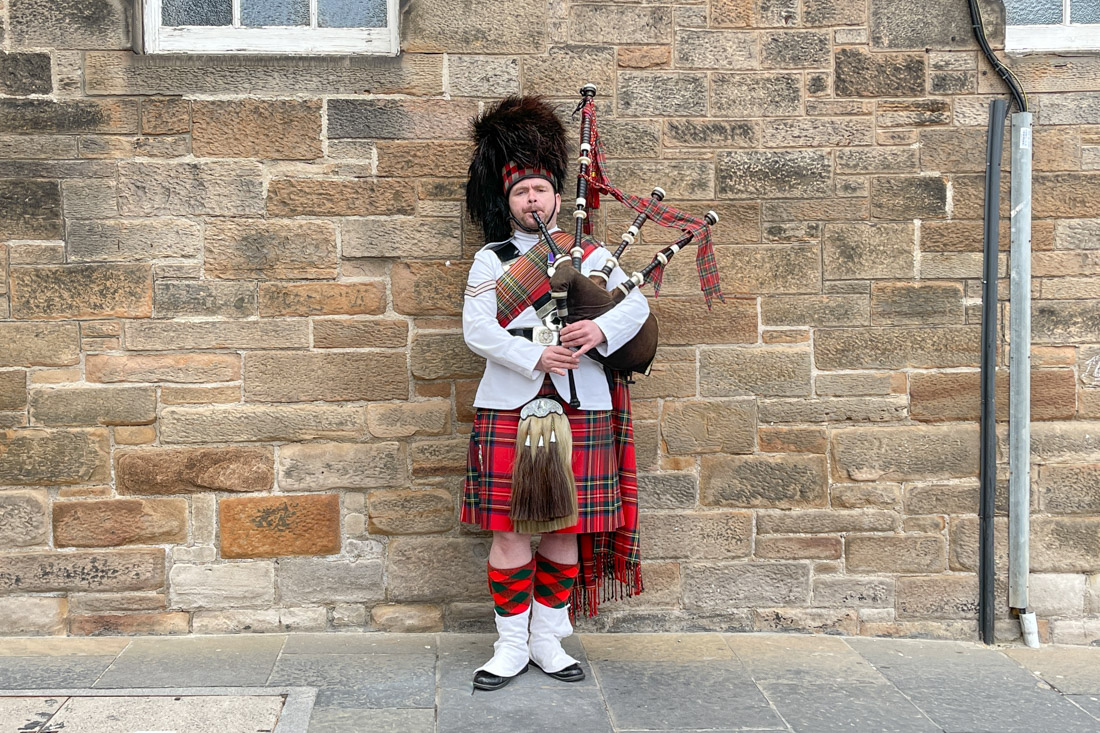
Scots is a whole language of its own, some common words you’ll hear are:
- “Dinnae” – Don’t; “Dinnae dae that”
- “Cannae” – Can’t; “I cannae find the pub”
- “Nae bother” – No Problem; “Aye, nae bother pal.”
- “Wee” – Small; “Just a wee bit more of that gin, please.”
- “Numpty” – Stupid; “What an absolute numpty.”
- “Minging” – Disgusting; “Oh, that is pure minging.”
I’ve been here for four years and I still learn a new word every week, so don’t get discouraged if you are still bewildered after a few months, you can brush up on your lingo here.

You probably won’t be shocked to hear that Scottish people like to drink, the country is frequently voted to be the heaviest drinkers in the world.
If you’re sober, there are still many things that you’ll enjoy, but pub culture is a big part of everyday life here and few activities exist where drink isn’t eventually introduced, for some.
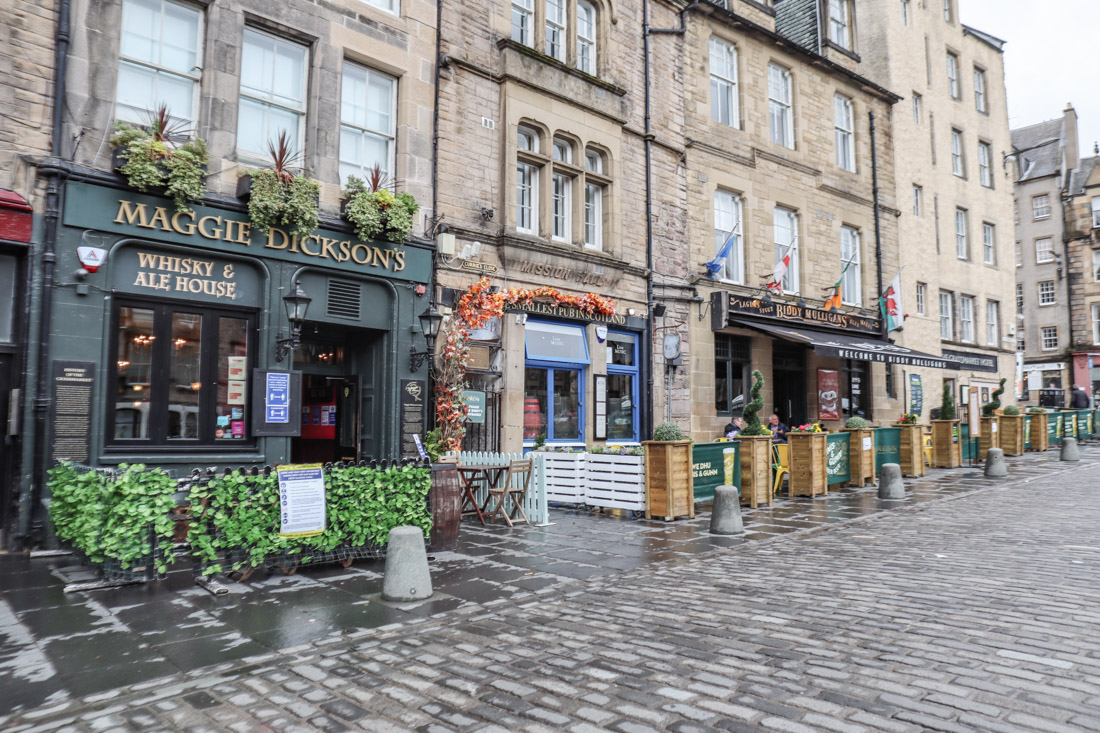
Scotland has a rich arts scene throughout the country, a die-hard football (soccer) following, and some amazing music.
And of course, the sights!
You’ll find fields of cows and sheep, snow-capped mountains, sandy-white beaches with crystal blue water, quiet towns, bustling cities all within a few hours drive of each other.

There aren’t many faux pas you can commit here; don’t imitate a Scottish accent (you’ll do a terrible job, trust me), don’t liken the Scottish to the English, and do not say that your pants are dirty – pants actually means underwear here!
You may also like our Edinburgh gifts guide.

9. Scottish Weather
The rumors are true, it rains here… a lot, in 2020 Scotland received over 100 inches of rain.
Don’t worry about the rain too much, it gives a great reason to complain, but other than that it just becomes a part of common life; most locals don’t even bother to carry an umbrella most of the time.
The rain can start at a moment’s notice, even during the bright mid-day sunshine, and end just as abruptly.
You’ll surely hear someone quote, “If you don’t like the Scottish weather, wait 30 minutes, and it’s likely to change.”
Along with the rain, you will find milder temperatures year-round winters are cold but not very snowy unless you are in the Highlands, summers can get up to 75F for a few weeks but more often hover around the 60s.
If you are from a part of American that gets all four seasons, you’ll be surprised to learn that you won’t need a separate summer and winter wardrobe here.
Most of my clothes are worn year-round with an extra layer or two added during the colder months and if you don’t have a trusty raincoat, you’ll certainly find one here.
One of the best things for me about life in Edinburgh is the long summer nights, at the height of the summer we have sunlight for 18 hours.
There are a few weeks where I go to bed and wake up with the sun shining as bright as it would in mid-day!
The downside of that means that during the winter there are about 7 hours of sunlight a day, meaning I go to sleep and wake up in total darkness.
Find out more in our guide on the best time to visit Edinburgh which details temperatures for each month as well as things happening in Edinburgh.
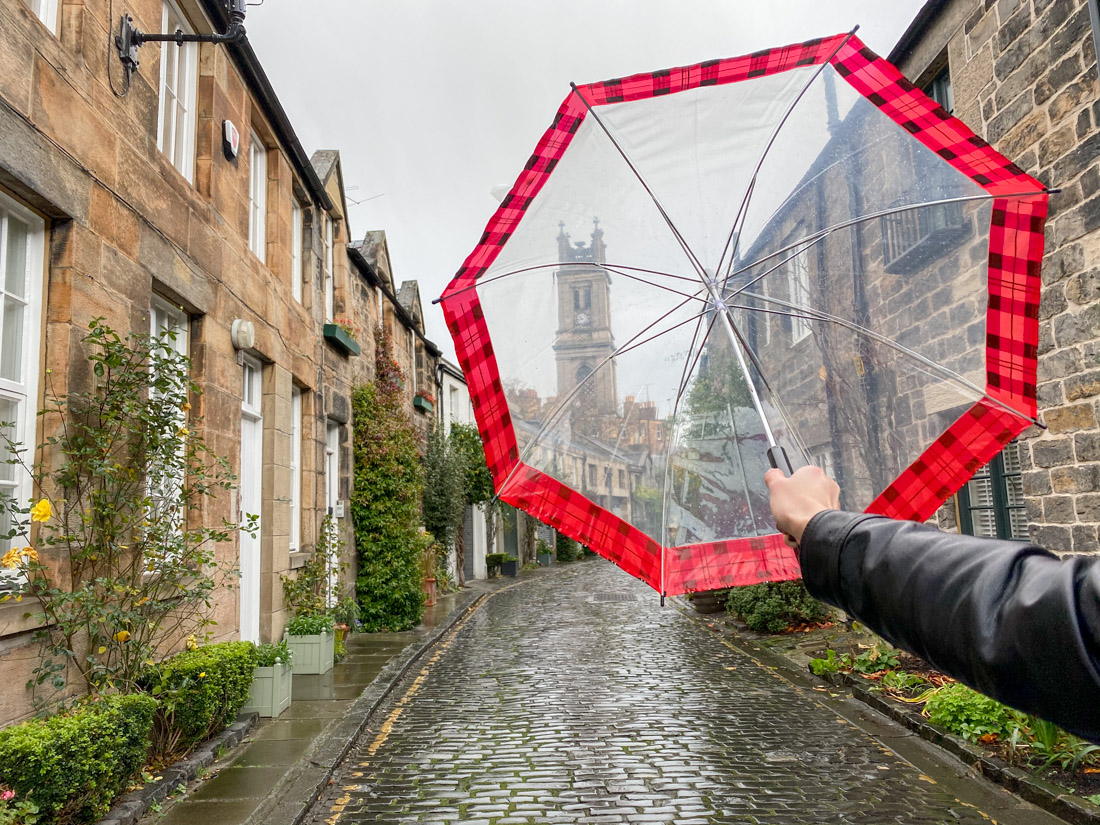
10. Getting to Scotland
So hopefully you’ve made your mind up and you have worked out how to move to Scotland for study, work or love!
All you need to do now is get there.
When flying from the US to Scotland, it is likely you will have to make a stop and change flights.
Possible changeovers take place in London, Dublin, Amsterdam and other European hubs.
Most visitors arrive in Scotland via Edinburgh, the capital of Scotland.
Edinburgh has one airport, two central train stations with trains arriving from Scotland and England, a bus station and trams which are limited to specific stops around the city.
Check out this guide on how to get to the city from Edinburgh Airport.

However, Edinburgh isn’t the only entry point.
Scotland’s biggest city, Glasgow which is located in the west of the country, also has an airport and is well connected with Preswick Airport.
In the north, you’ll find Aberdeen Airport and Inverness Airport however, flights are less frequent.
Another aspect of travel we’ve not discussed is ferries!
If you plan to visit any of the Scottish islands other than Skye, you will arrive by ferry.
Ending Notes
There are so many things to know before moving to Scotland, it would be impossible to list them all.
The most important thing to know (once you get a visa!) is to enjoy this wild ride and a once-in-a-lifetime opportunity.
Your friends and family will be very jealous, for good reason, and will beg you to make some space so they can come to visit and constantly ask if you can help them learn how to live in Scotland.
And if you’re moving to Edinburgh, welcome! Check out this guide for more Edinburgh specific tips.
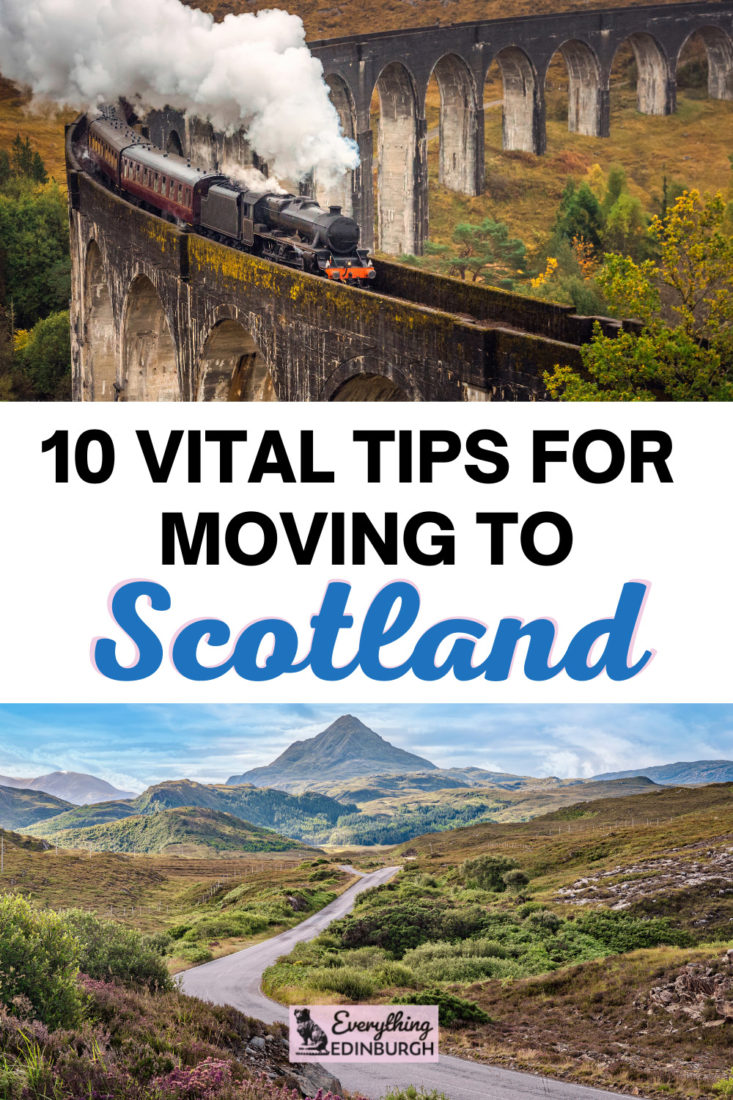


Your information was very helpful. I am retired and have been to Scotland a couple of times and absolutely love the simplicity of it. I plan on spending my retirement years there. You are correct there is so much to consider.
Thank you Kathy! I will pass that feedback to Nicole, the author.
I would love to make to move to Scotland in 1-2 years.I am retired,to live my remaining years there.I was in Scotland about 4 years ago.I made a 5 week journey to Scotland.England,Wales, Northern Ireland and Ireland.Just myself, journey of a lifetime.I now want and feel the need to make Scotland my home.
That’s lovely to ready, Cynthia! I hope that your dream comes true.
Hello, just curious. Have you decided on a city or region, and if you have, which criteria did you apply?
Hi Andreas, Nicole lives in Edinburgh. This is where her husband lives.
This is very interesting. I am retired and I like to move to Scotland to go to law school there for a few years. Maybe it leads to employment, however, no matter what I would like to stay as a retiree since I can support myself.
Glad to read about others who are retired and want to move. Hope to see you there one day.
Thank you Andreas!
As a Scot how now lives in Los Angeles, this was a delightful read. Pretty accurate! I loved all the pics and miss home (Edinburgh) so much. Thanks for appreciating my country!
Aw Amanda, Nicole will love to hear this. Thank you for taking the time to leave a comment.
Your website with tips about moving to Scotland has been a great resource. Just wondering… since I am in a similar situation in that I am planning to marry a man from Scotland, I was wondering what process you went through in terms of that initial visa. Did you first get a marriage visa or something different?
Also… Were you able to get a marriage license even though you were not a Scottish citizen?
Thank you for any assistance you can provide. I really appreciate it.
Lauren Clark
Hi Lauren. Thanks for your questions. You can reach out to Nicole at this Instagram account to ask directly.
All the best with your wedding!
Thank you so much for this. My daughter really wants to move to Scotland and I knew it would be challenging. Your info brings it to reality. This is incredibly in-depth and has been so helpful.
Thank you Helen. I will pass this lovely comment to Nicole and I hope that your daughter makes it over!
Thank you for this article. Very informative. My wife went to University of Edinburgh and we are vacationing here and I do wanna move here. The lifestyle of live to work and not work to live just makes me want to stay. Would be a logistical nightmare to move but these tips sure help. Getting a Skilled worker visa as a lead software engineer should be “easy” I hope if we ever decide to move. Again, great article and thank you.
Thank you Adam. I hope you can make it work!
I keep seeing all these references to “rewriting your resume in the Scottish CV style,” yet no one ever goes into any further detail about what that style involves… Any immediate references? I am, of course, looking through Google as well but I’m not really getting anywhere (I mean, I’ve gotten some places but I’m not really seeing much of a difference).
Hi Dori. Thanks for your question. I’ve updated the guide with tips from Nicole.
Wow, this post was so freaking helpful!!! My family and I are considering moving and this gave us so much food for thought. Thank you for taking the time to write this!!!!
Thank you Amy!
My husband and I are on Social Security. He’s retired and I’m disabled. Will we still receive social security if we move to Scotland?
Hi Katie, you’d need to speak to a specialist about that as in the UK most retirees have working in the UK, therefore, have paid tax and National Insurance.
I have visited Scotland a few times and love it. I am retired with a good retirement income and want to move to Scotland. I have not been able to find information on retirement visa’s. Is there such a thing and if so where might I find the information required to retire from the US to Scotland
Hi Cathy, for visas related to retirement you are best speaking to an immigration lawyer to see if there is such a thing. All the best!
We are three years into our retirement in the Highlands. A very large and unexpected expense for us has been the annual Accoutancy Fees for our IRS and HMRC tax filings. The accountants fees have been far greater than our tax bills. We are a blended US/UK marriage and have moved between the US and UK a number of times. Consequently we both have pensions in both countries. Would love to know what firm(s) you use to prepare your taxes. We have a pretty simple tax landscape and are desperately seeking a cheaper alternative.
Hi Sam in the Highlands. We can’t provide that information but didn’t want to leave your comment unanswered. I hope you find a resolution.
I’m returning to Scotland after 16 years in the US and I enjoyed reading your perspective on life in Scotland.
Thank you Fizz. Have a wonderful return!
Hi, this was very informative. I have a work visa and will be moving early next year. Would you recommend a lease or buy a car? I will be in a rural community. Any other transportation/car advice would be greatly appreciated? I will stay for two and a half years and then move back to the US (home).
Hi Chris, I’m not sure how long-term car leases work but I would say you would be looking to have access to a car if you are living rurally. It depends how rural really. Check Scotrail for train stations close to your new address and the local bus services too. Good luck with the move.
2 Quick questions. We are planning on retiring to Scotland. I am trying to see how our Social Security and 401k will be taxed there. Can you point me to an answer? Also, my wife is a UK citizen who has lived in the USA since age 8 (now 67) as a Resident Alien. She was born in the UK and her parents and relatives were born in the UK. She still travels on a UK passport. I want to move to Scotland on a SPOUSE VISA with her. Seeing she is not currently living in the UK, will this be a problem? Thank you for any assistance you can offer.
Hi Jim and Sharon. We can’t help with specifics about moving to Scotland; those questions are best placed with an immigration lawyer. Good luck with your retirement.
Hello Jim and Sharon – just a quick suggestion for you – spend some time understanding the financial implications of moving to Scotland with a Green card. US tax on normal IRA’s and inheritance tax work very differently if she has a green card and is not a US citizen. Just leaving the US on a Green card does not get you out of the US tax system. You will have to file taxes forever in the US, even thought you may not have to pay any depending on income levels. It is a minefield. Best to ask a cross border tax advisor. Good luck.
I was born in Rothesay, Isle of Bute, in 1942. My family emigrated to the U.S. in 1948. I eventually married a native born American. Recently, I applied for and received a British passport. As a retiree, I am looking to return to live the rest of my life in my home country. Are there any limitations to that plan despite the fact that I am a British subject.
Hi Fred. Bute is lovely, the circular hike is so nice!
You are best speaking to an immigration lawyer for factual information. All the best!